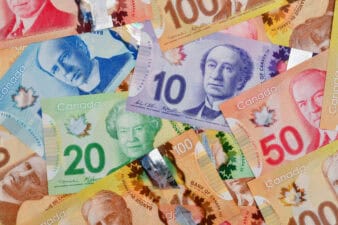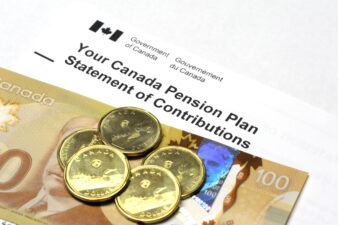Since COVID-19 became a pandemic, Canada came out with a plate full of financial and tax measures. The spending of the federal government for its COVID-19 Response Plan is astronomical. We don’t know the final price tag yet, but payouts for the Canada Emergency Response Benefit (CERB) are now over the budget.
The latest reports indicate that the Canada Revenue Agency (CRA) has paid out $41 billion to 8.25 million people. The amount is $6 billion more than the $35 billion budget. Along with the other aid programs, CERB could increase the federal deficit in 2020. There is a worry that Canada might not have enough fiscal firepower when the economy rebuilds.
Temporary stop-gap
CERB is a taxable benefit available to employed and self-employed workers (including part-time, contract, and seasonal workers) who lost jobs after March 15, 2020, due to COVID-19. The remuneration is $500 a week for a pre-set four-week period.
Cash is oozing out of the CRA as it enters the fourth of seven eligibility periods. The last one is on August 30, 2020, although the tax agency will receive applications until December 2, 2020.
Displaced workers welcome the temporary CERB. Some are more thankful for the help. The $2,000 monthly is more than what they were earning before business closures. There is no verification of your pre-corona income. The emergency money comes to those who need it badly.
Various utilizations
Each recipient gets a total of $8,000, which the CRA dispenses gross of tax. The purpose of CERB is for people to have money for food, groceries, medicine, and transportation during the crisis. A person can use it for housing or rent. The tax conscious will not spend the entire CERB and save a portion for tax.
Other CERB receivers are paying debts with CERB, while the enterprising ones use the money as seed capital for investment. Your $8,000 can grow via dividend investing. Earnings are tax-free if you invest within your Tax-Free Savings Account (TFSA).
High-yield investment
A stock flying under investors’ radars is Timbercreek Financial (TSX:TF). Your $8,000 CERB can buy you nearly 924 shares ($8.66 per share) of this $719.93 million company. The current dividend yield is 7.99%. In your TFSA, your CERB will generate a tax-free income of $639.20.
Timbercreek is a mortgage investment company that provides short-term structured financing solutions. Its clients are commercial real estate investors in Canada. The company lends against income-producing commercial real estate properties like multi-residential, office, and retail buildings, mostly in urban markets.
According to Timbercreek’s president and CEO Cameron Goodnough, the impact of COVID-19 on the company is superficial. The earnings results of Q1 2020 (quarter ended March 31, 2020) bear him out. Adjusted net income did not deteriorate, as it came out $100,000 better than the $13.1 million in Q1 2019.
Timbercreek’s business model makes for a strong foundation. Quality real estate properties are the security for the loans. Management expects to thrive in Q2 2020, given the positive near-term outlook. It also has $100 million in deployable cash.
Crisis should end
CERB is popular and widely appreciated by Canadians. Let’s hope the crisis ends soon. A program extension could devastate the economy.







